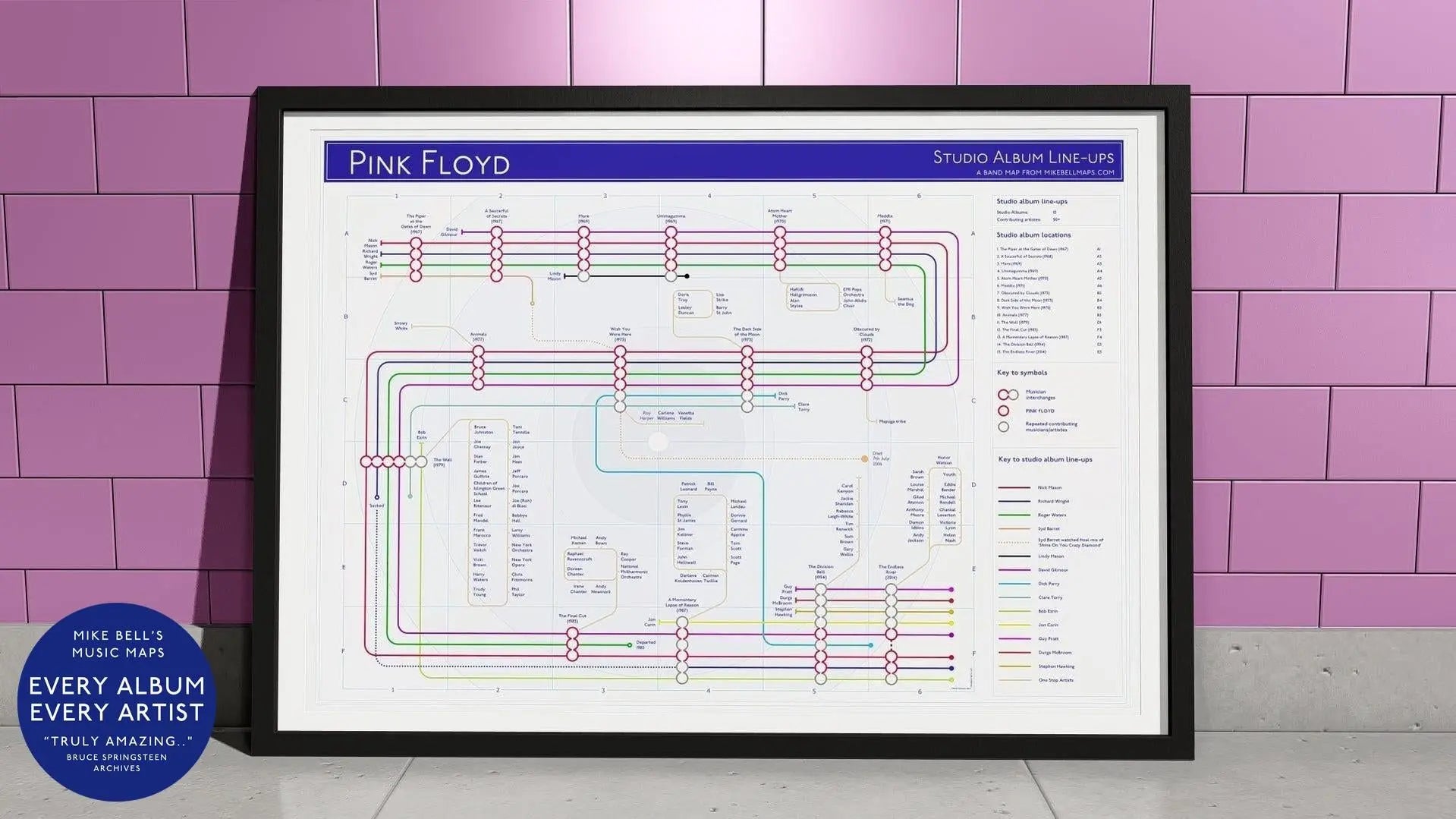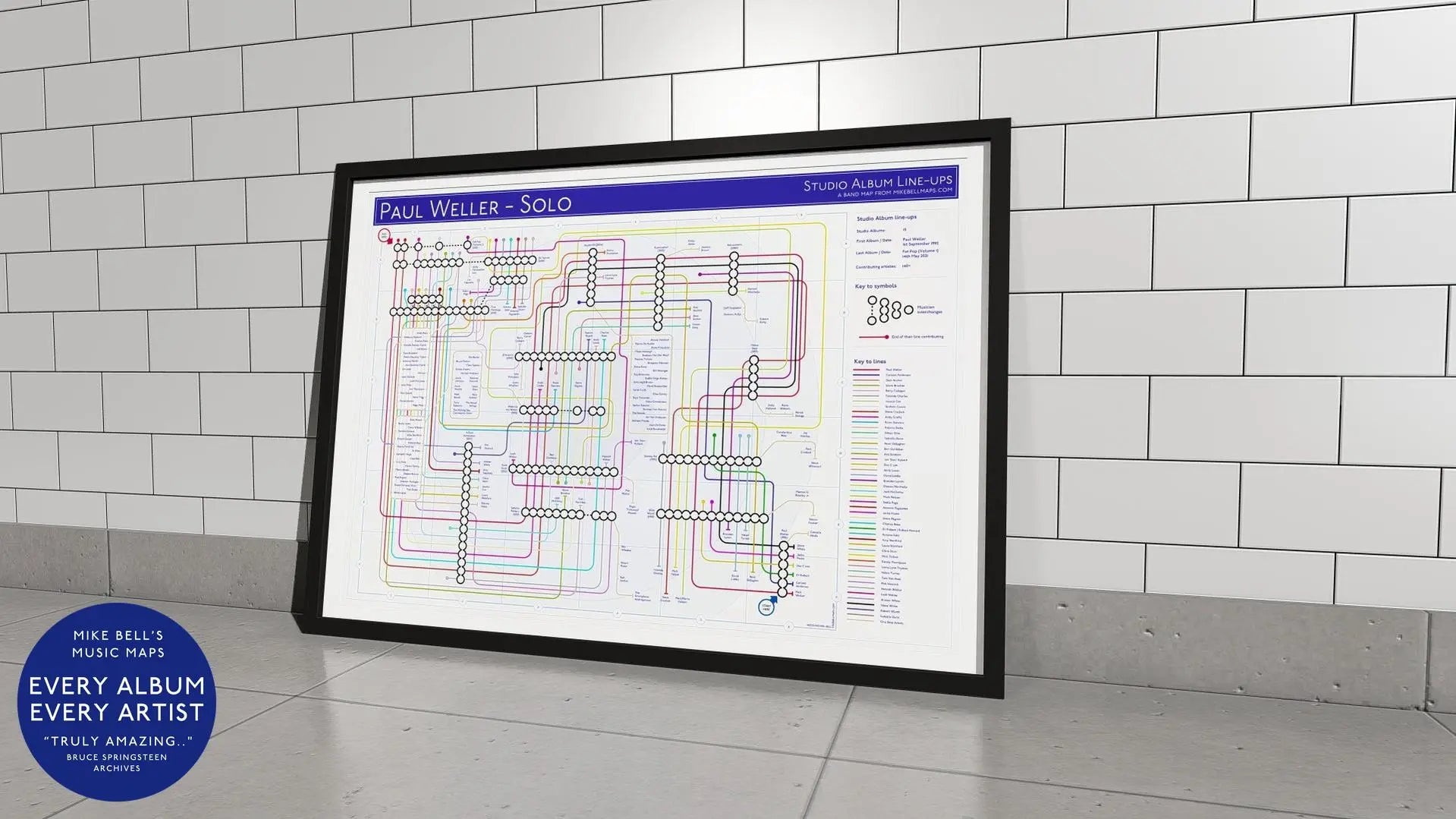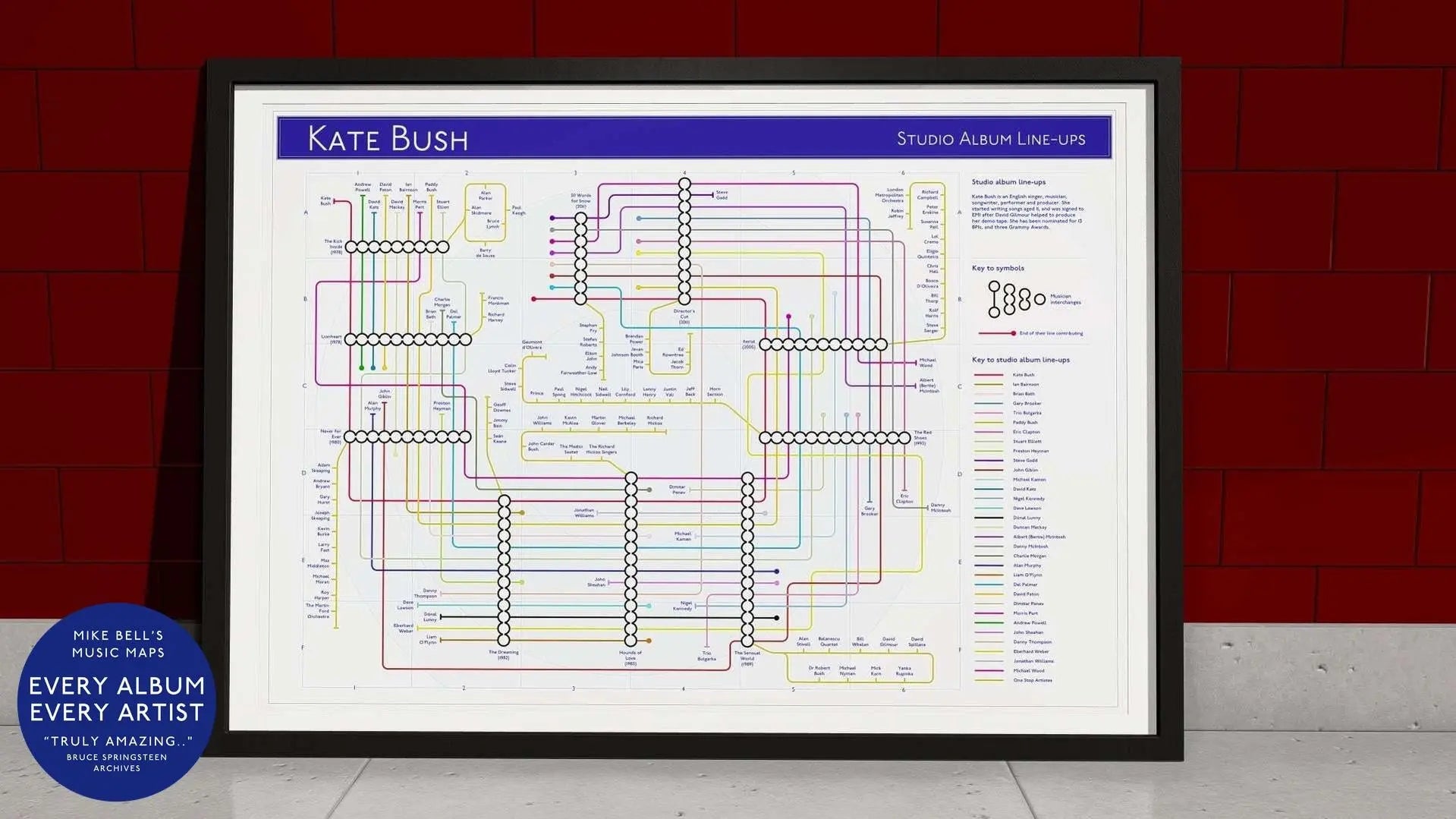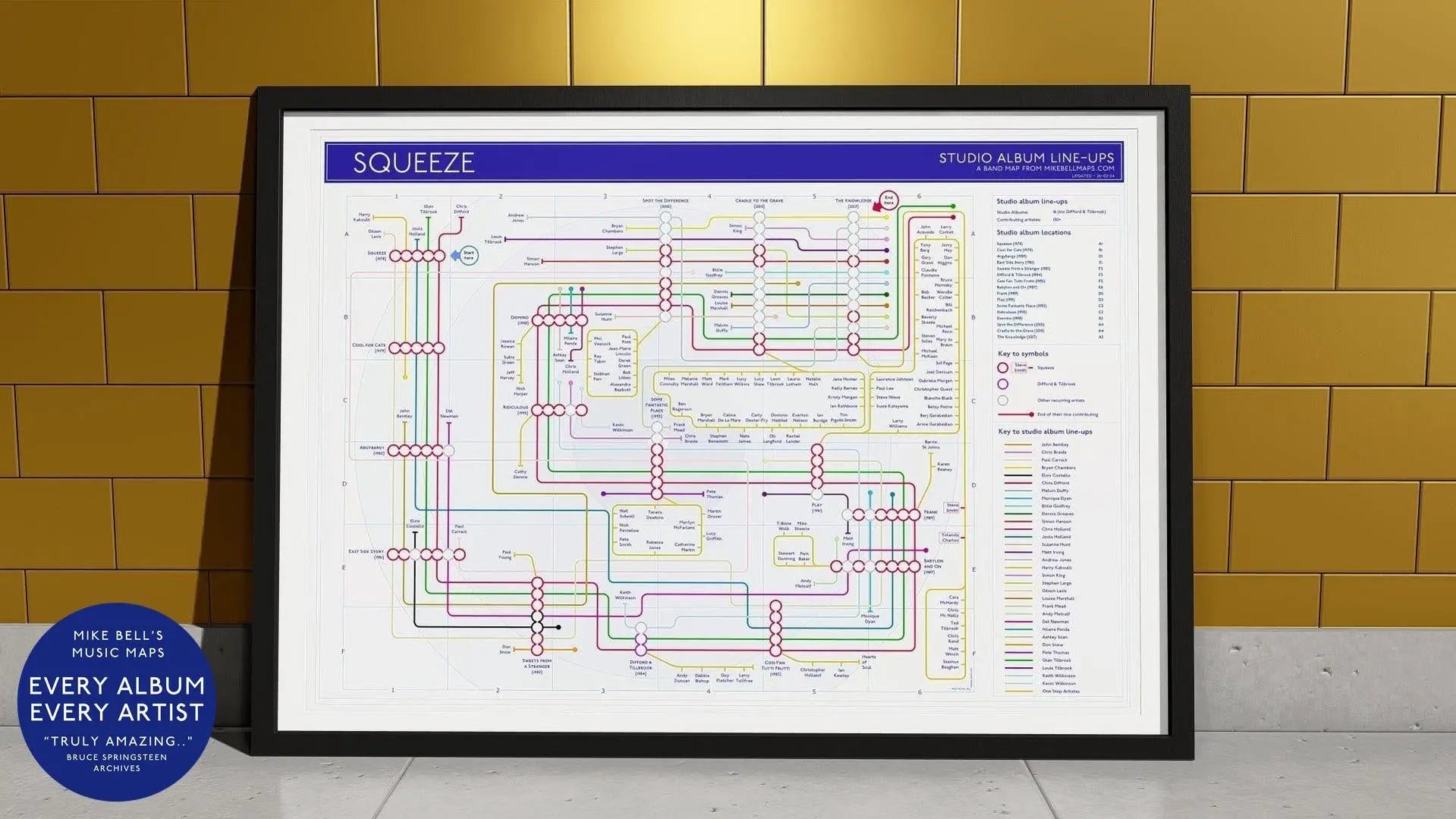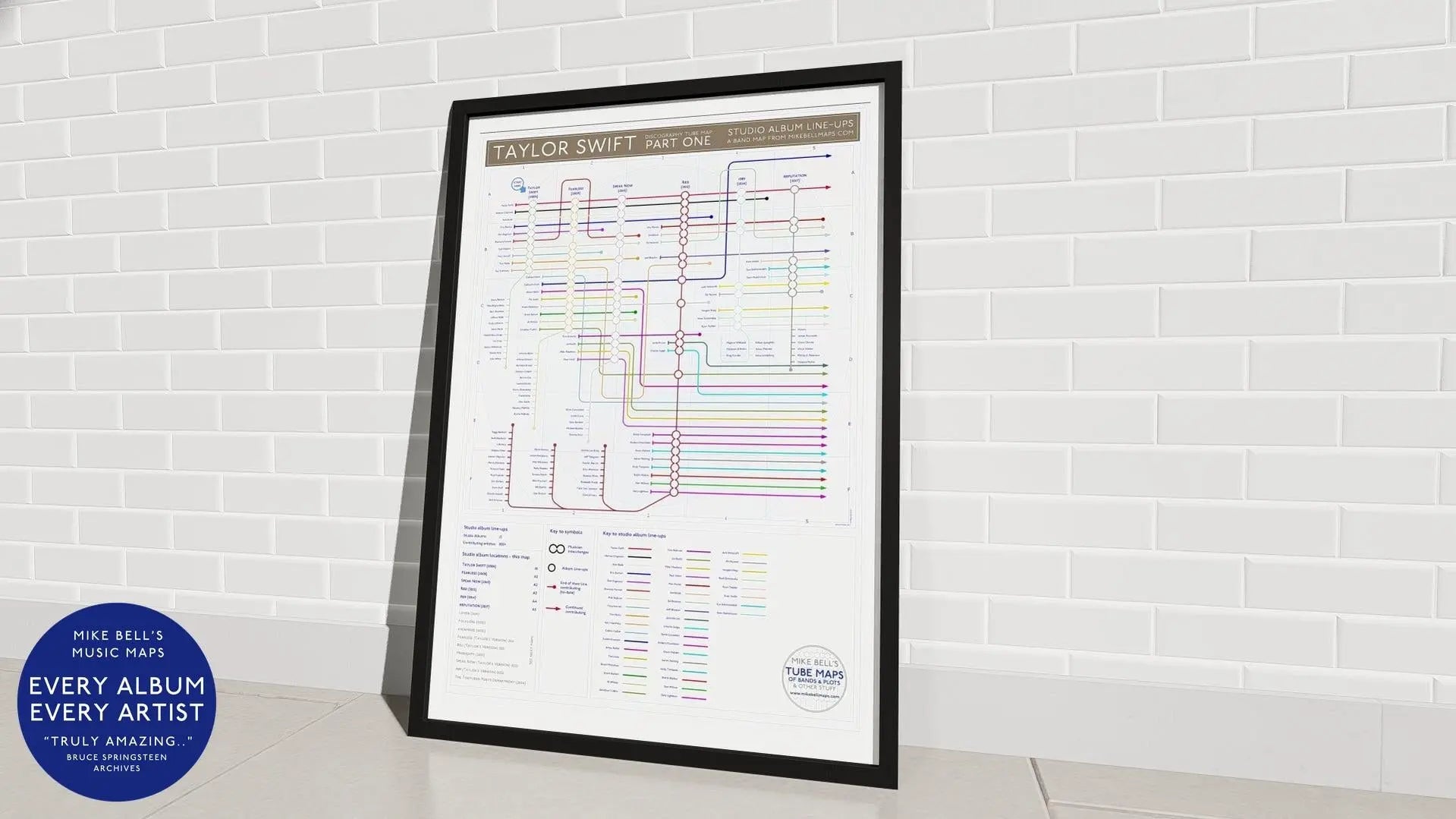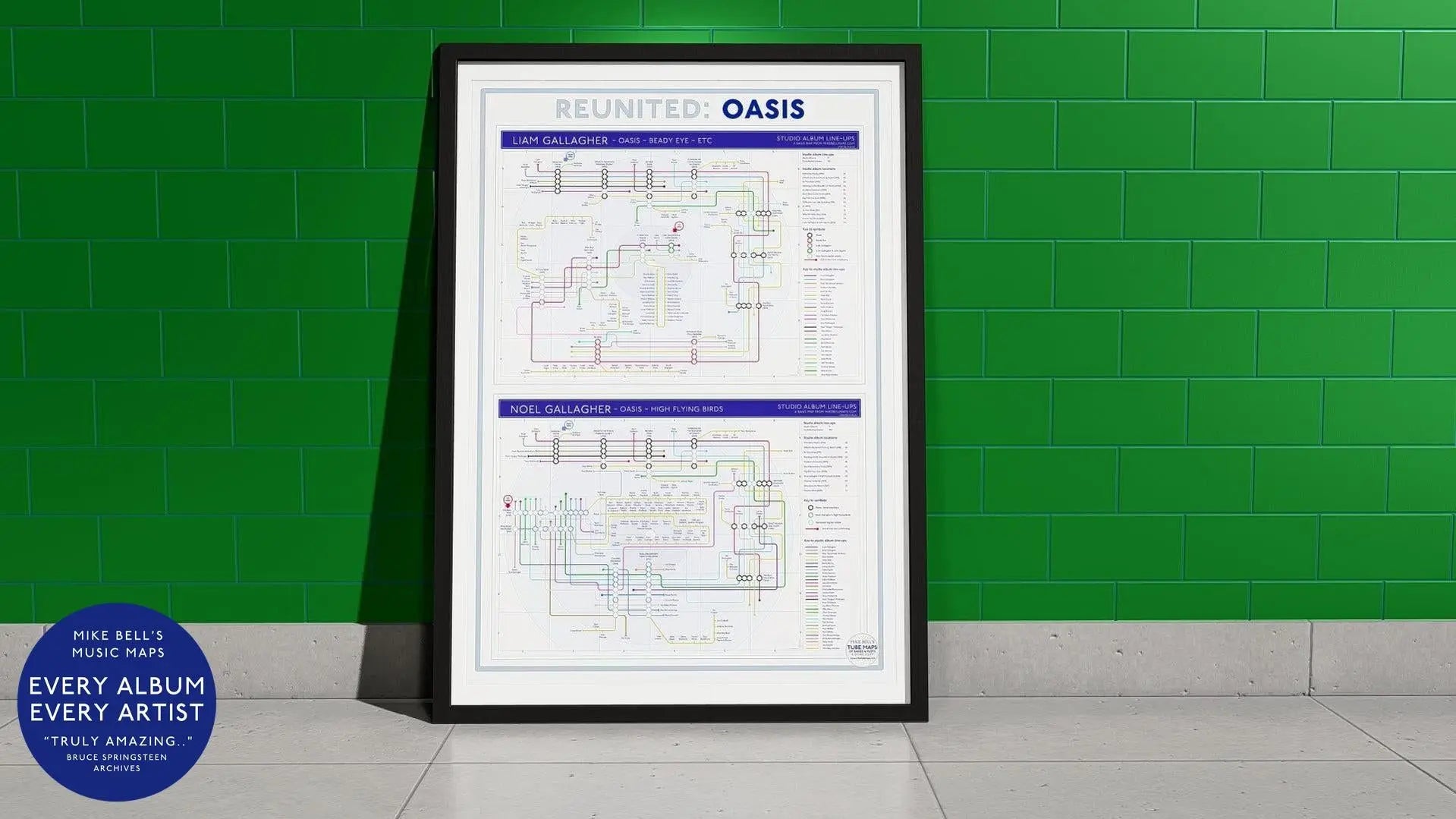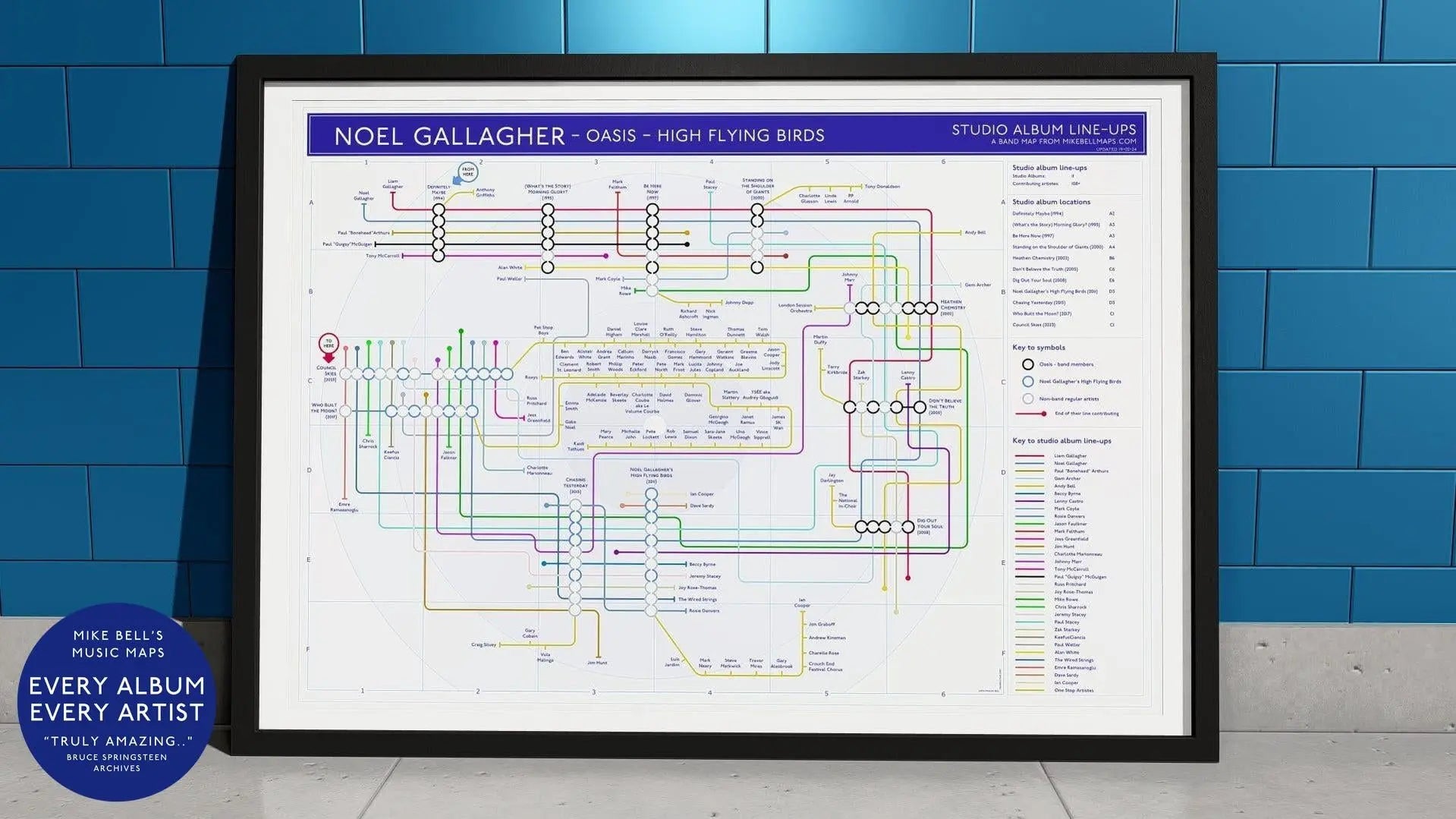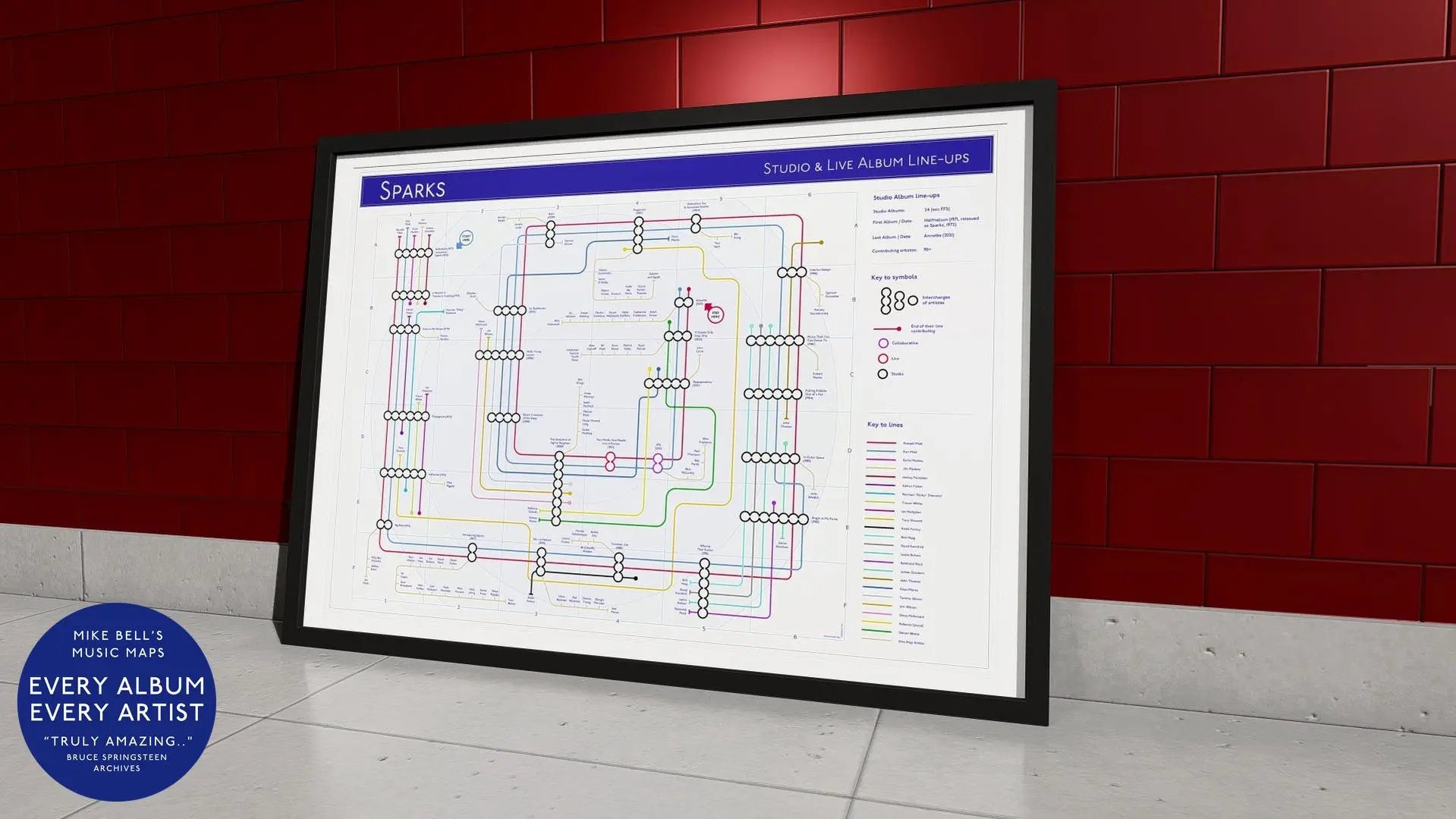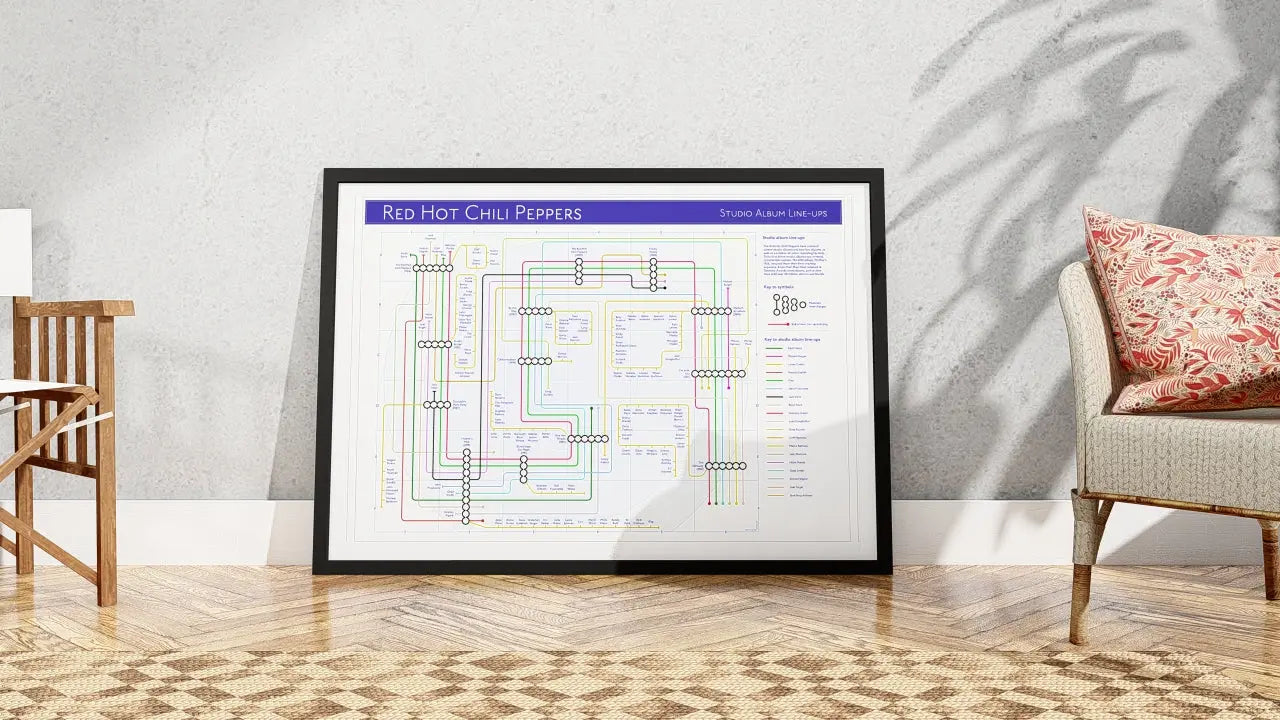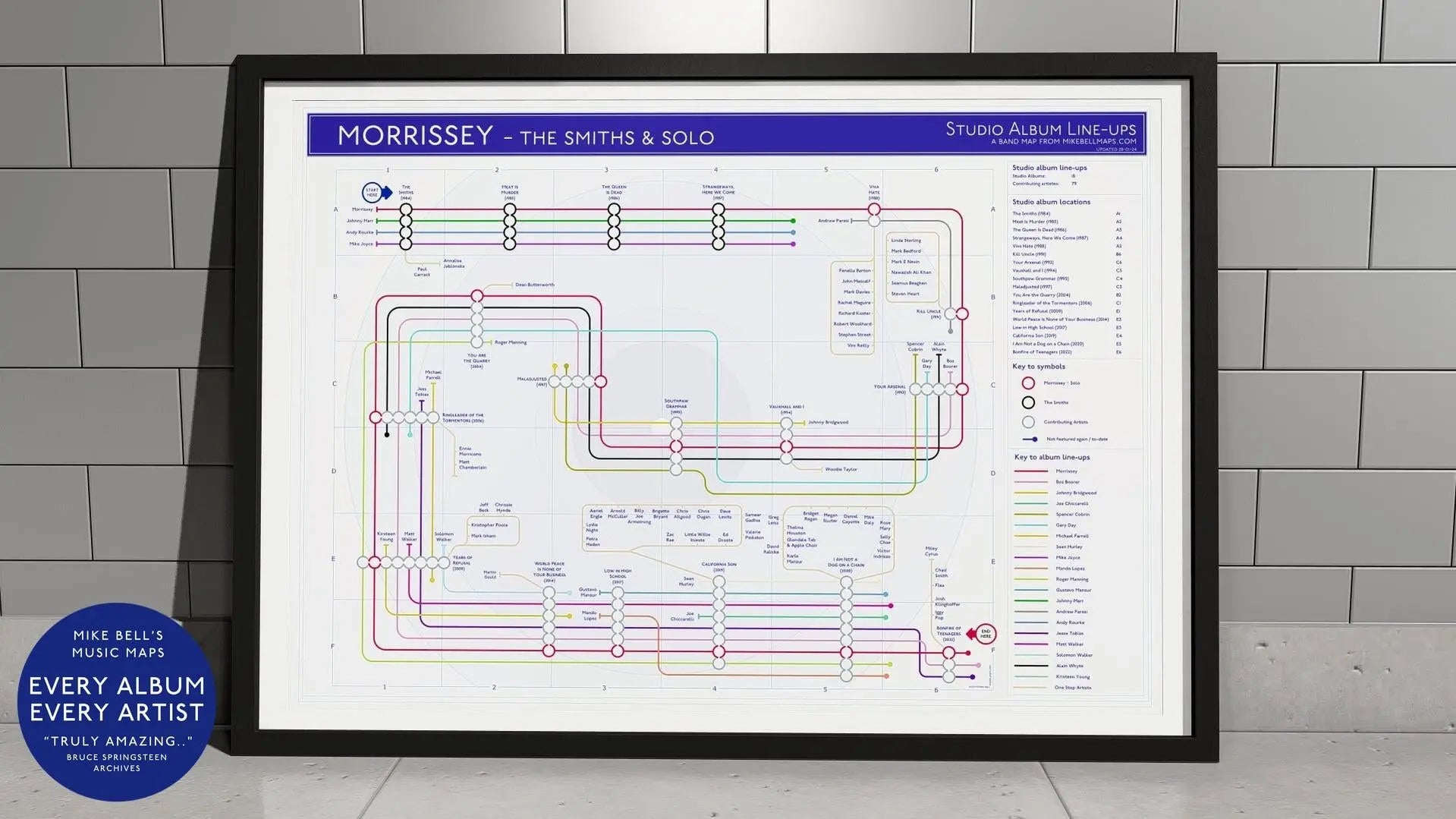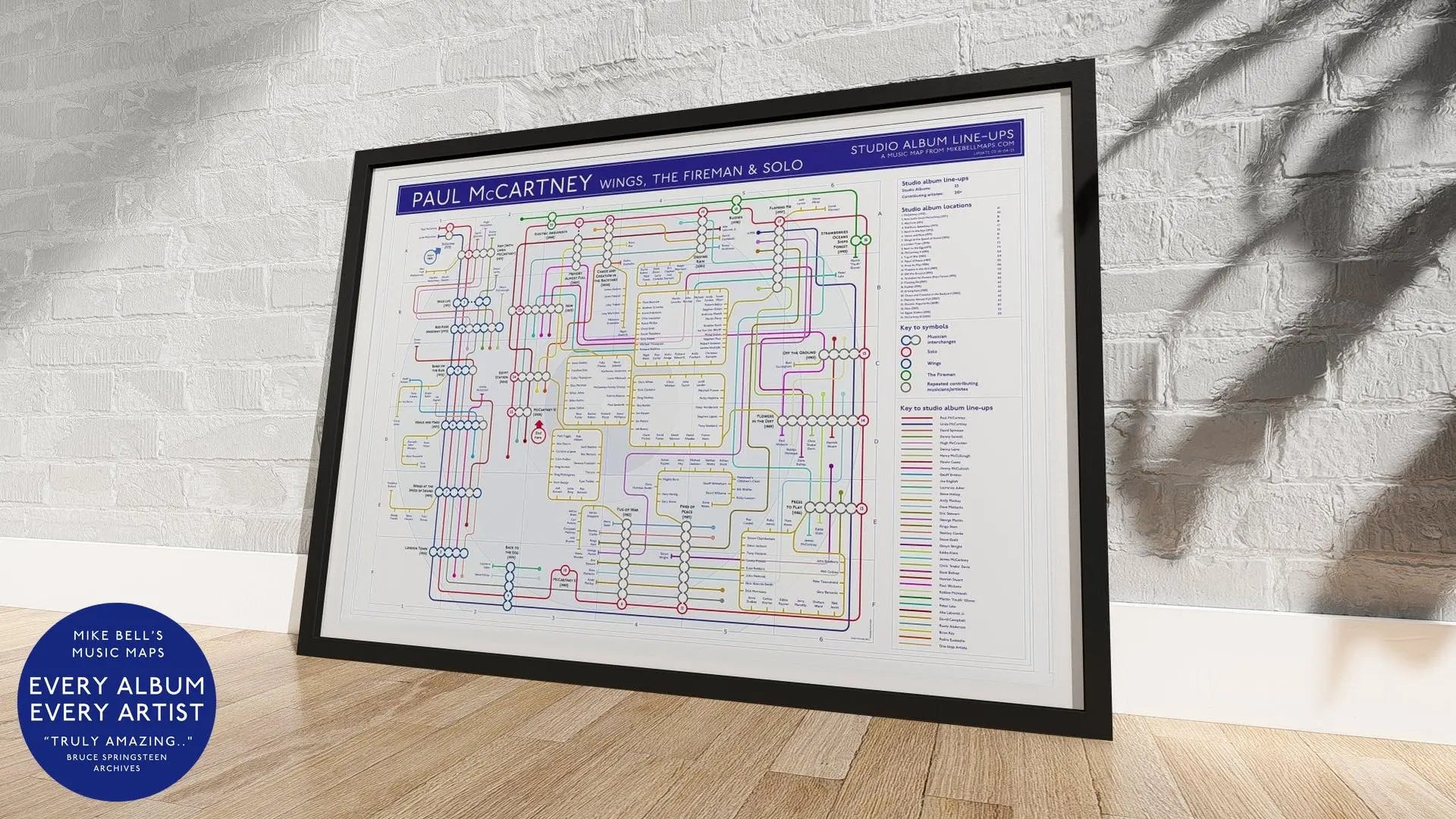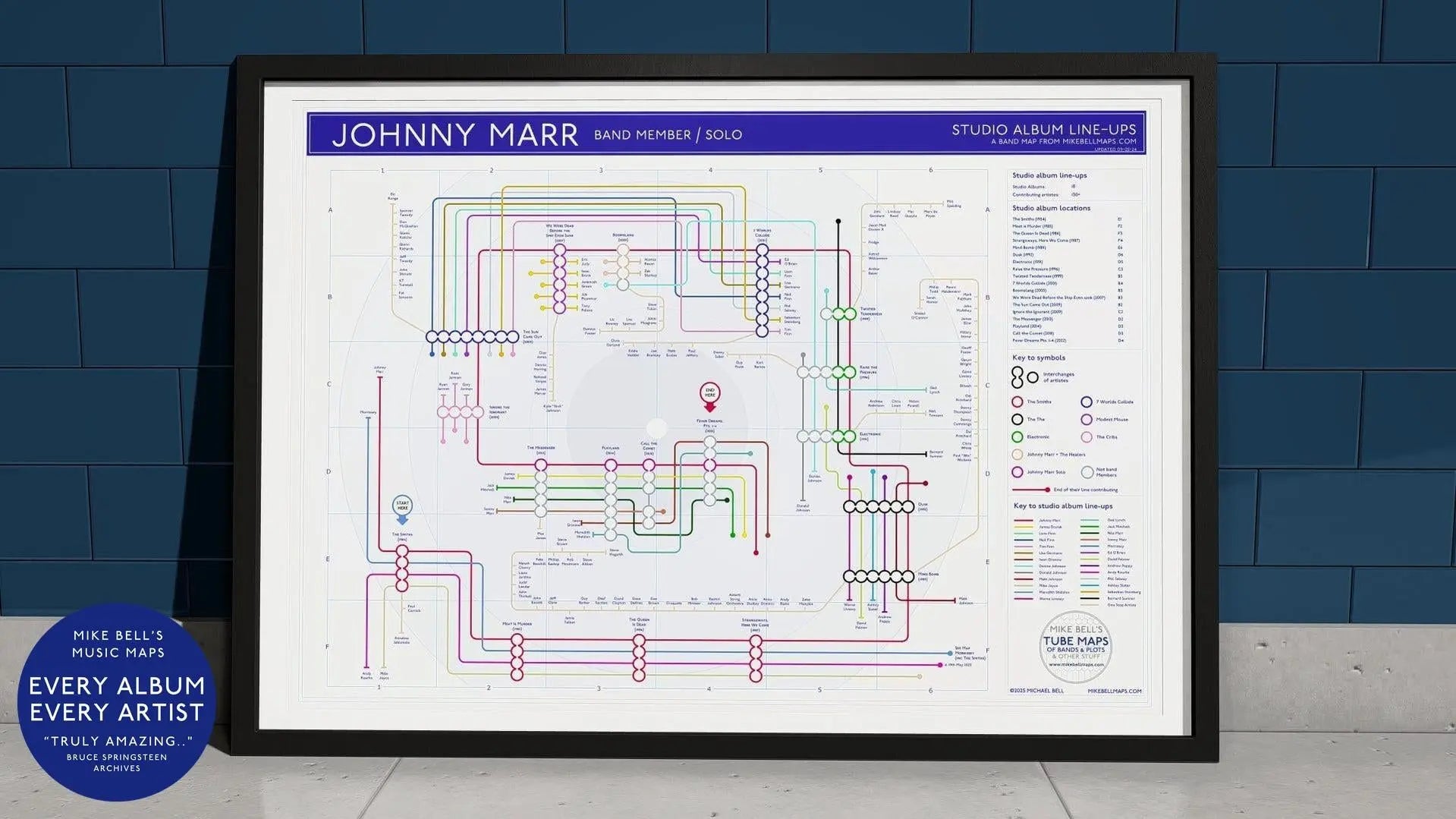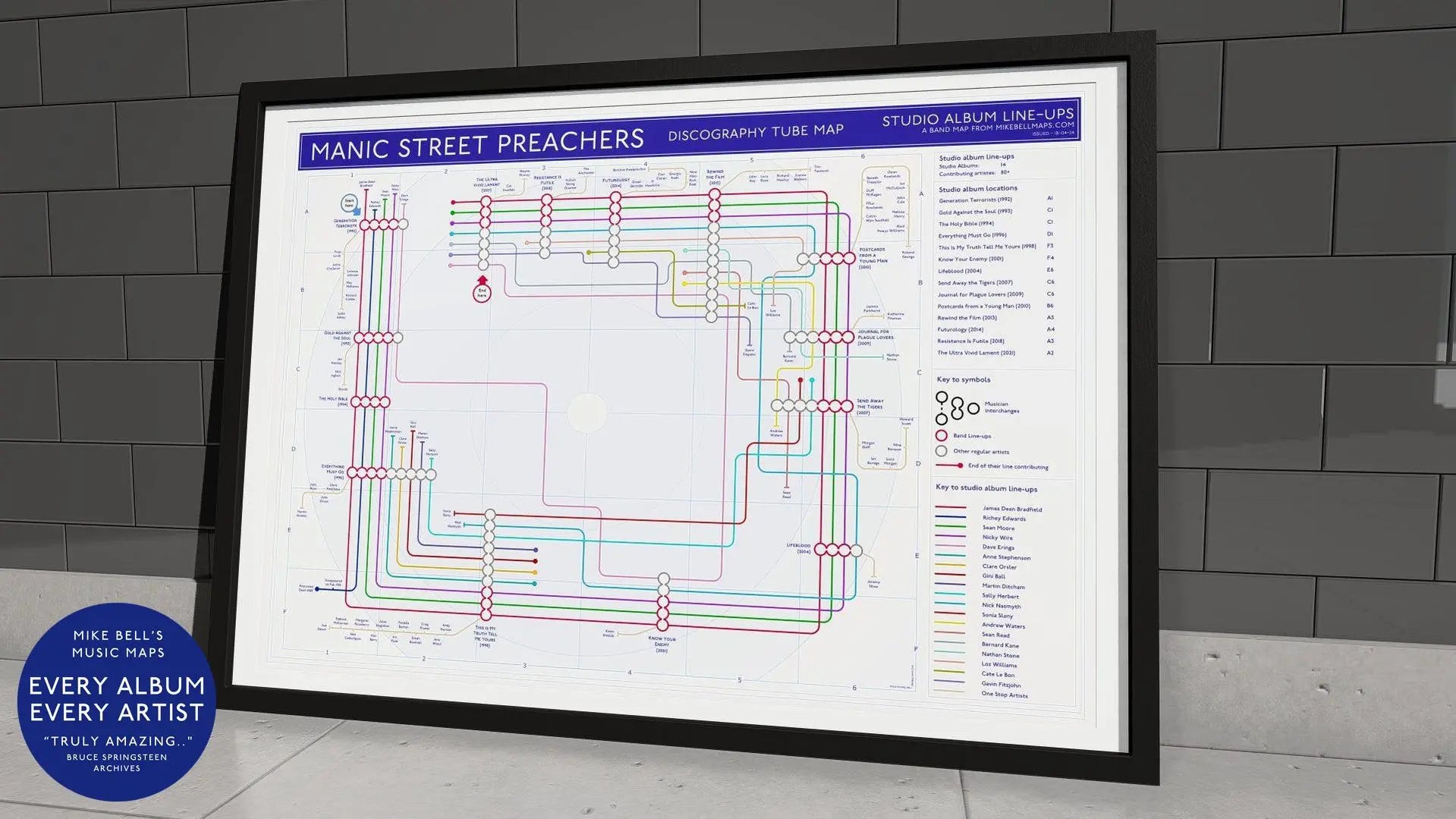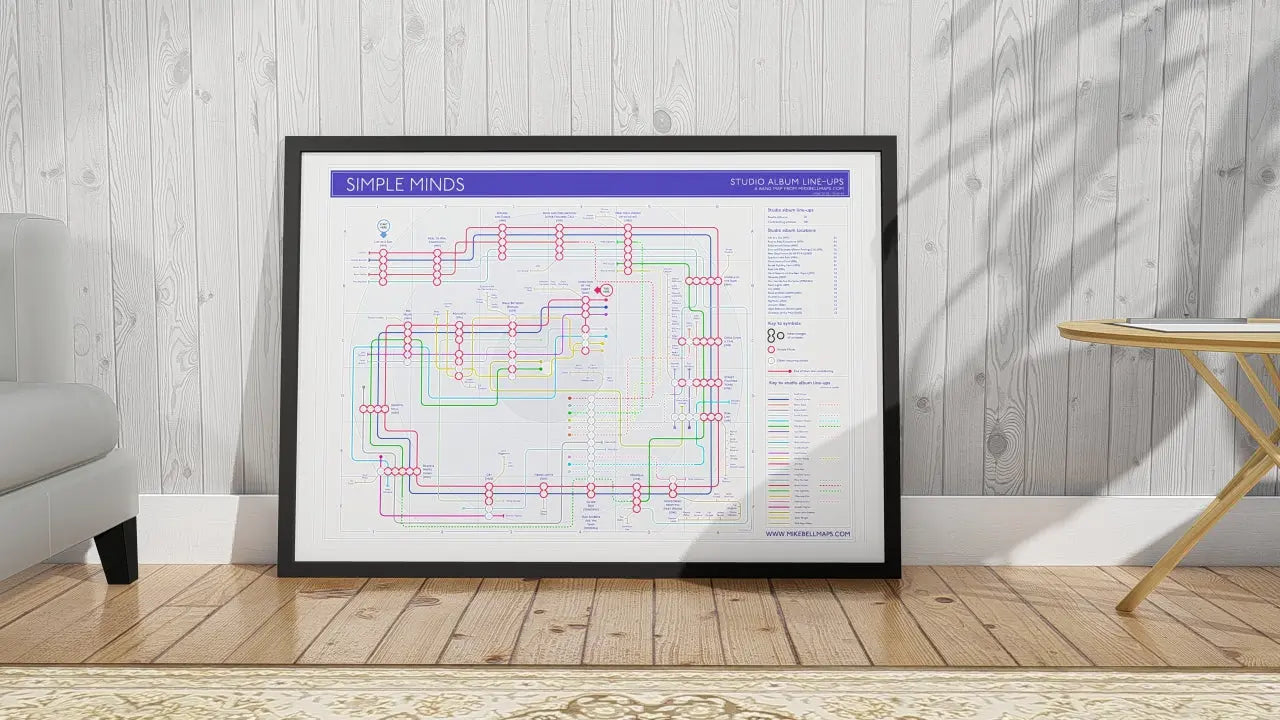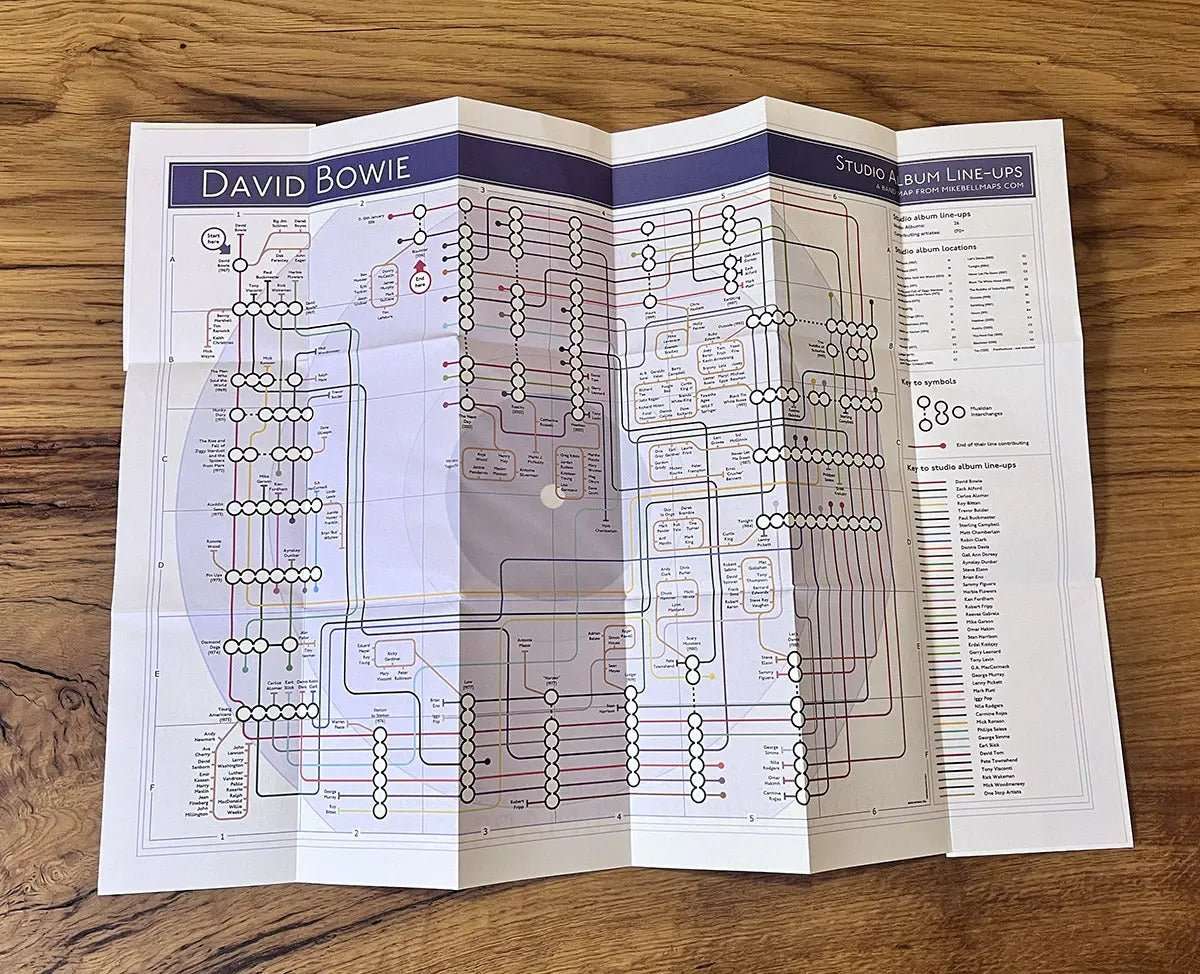
David Bowie's Session Musicians and Collaborators
by Mike Bell
·
Throughout his five-decade career, David Bowie surrounded himself with exceptional musical talent that helped shape his sound across multiple reinventions. Far from being a solitary genius, Bowie thrived on musical partnerships: David Bowie's session musicians and collaborators defined his ever-evolving artistic journey, which I have tried to capture across his studio albums music map.

The Art of Collaboration
One of the greatest aspects of Bowie's celestial stardom was that despite being distinctly singular, he welcomed numerous people into his creative orbit, essentially creating his own bohemian world. Unlike many artists who might jealously guard their artistic vision, Bowie relished the input of others, understanding that collaboration could elevate his work to new heights. David Bowie's session musicians show an openness to outside influences, which became one of his defining characteristics as an artist, allowing him to constantly reinvent himself while maintaining his distinctive voice.
Early Collaborators (1960s-Early 1970s)
Before becoming the iconic David Bowie, the young musician worked with various bands, including the Konrads (under his birth name David Jones), the Hooker Brothers, the King Bees, and the Manish Boys. These early groups helped shape his musical foundations, though it wasn’t until he embarked on his solo career that his collaborative approach flourished.
On his breakthrough album "Space Oddity" (1969), Bowie worked with folk guitarist Keith Christmas, who played acoustic guitar on several tracks, including "Letter to Hermione," "God Knows I'm Good," and "Occasional Dream." The album also featured guitarist Tim Renwick, who would later work with artists like Pink Floyd, Elton John, and Al Stewart. When Tony Visconti declined to produce "Space Oddity" itself (considering it a "cheap shot" novelty), Bowie collaborated with producer Gus Dudgeon, who helped craft the spacey, atmospheric sound of the title track.
The Spiders from Mars Era (1971-1973)
Perhaps no collaborator is more associated with Bowie's early breakthrough than guitarist Mick Ronson. As the lead guitarist of the Spiders from Mars, Ronson's crunchy, theatrical guitar work helped define the sound of albums like "The Rise and Fall of Ziggy Stardust and the Spiders from Mars." Ronson was more than just a guitarist—an arranger, pianist, and backing vocalist whose contributions were fundamental to Bowie's glam rock period.
Many Bowie fans consider Ronson his most important collaborator, with one Reddit user describing Ronson's guitar as "the best guitar I'd ever heard in my life" that "defined that album's sound for me." His theatrical playing style perfectly complemented Bowie's androgynous alien rock star persona, creating one of the most iconic partnerships in rock history.
The Berlin Trilogy and Brian Eno (1976-1979)
When Bowie moved to Berlin to reinvent himself yet again, he formed a crucial partnership with electronic music pioneer Brian Eno. Together, they created what became known as the "Berlin Trilogy" of albums: "Low," "Heroes," and "Lodger." This collaboration created the new wave genre, with one fan noting these albums were "world-shattering at the time.
Eno brought experimental and ambient sensibilities to Bowie's work, pushing the boundaries of popular music. Their partnership exemplified Bowie's willingness to explore new sonic territories and reinvent himself entirely. It's no wonder Eno is cited by many as their favourite Bowie collaborator.
The Commercial Peak and Nile Rodgers
While Bowie had achieved critical acclaim and cult status throughout his career, it was his collaboration with Nile Rodgers that catapulted him to global superstardom. Rodgers produced Bowie's 1983 album "Let's Dance," which became Bowie's most commercially successful record.
As one Reddit commenter aptly put it, Nile Rodgers is "probably the most important [collaborator] because he is the one more than anyone besides Bowie that made Bowie the #1 mega superstar in the world and that commercial success pushed all his weird and lesser known work far and wide." Rodgers brought a danceable, radio-friendly quality to Bowie's sound without sacrificing artistic integrity.
Long-Term Musical Partnerships
The story of David Bowie's session musicians and guests is enhanced by the regular partnerships of music's 'greats' as part of his song creation. These became as much part of Bowie's shifting sounds as his own internal creativity.
Tony Visconti
No discussion of Bowie's collaborators would be complete without highlighting Tony Visconti. As Bowie's most frequent producer, Visconti worked on numerous albums spanning multiple decades, from "Space Oddity" (though not the title track) through "The Man Who Sold the World," much of the Berlin era, and Bowie's final albums "The Next Day" and "Blackstar."
Visconti's understanding of Bowie's artistic vision and technical prowess in the studio made him an invaluable collaborator. Many fans consider him Bowie's most important musical partner, with one Reddit user stating, "Visconti is the most important for sure."
Mike Garson
Pianist Mike Garson first joined Bowie's band during the Ziggy Stardust era. His most memorable early contribution was his avant-garde piano solo on "Aladdin Sane." Garson's jazz-influenced, classically trained approach brought a sophisticated musical element to Bowie's work.
Garson would become one of Bowie's most enduring collaborators, playing on over 20 albums and performing in over 100 shows with the singer. His distinctive piano work can be heard throughout Bowie's career, from the 1970s through Bowie's final tours in the early 2000s. In the 2000 BBC Radio Theatre performance, Garson remained a central member of Bowie's band.
Carlos Alomar
Guitarist Carlos Alomar formed the backbone of Bowie's rhythm section throughout much of the 1970s and 1980s. First joining Bowie for the recording of "Young Americans," Alomar went on to play on eleven Bowie albums and co-wrote the hit song "Fame."
Music writer Chris O'Leary has described Alomar as "Bowie's finest collaborator," a sentiment many fans agree with Alomar's rhythmic, funk-influenced guitar playing provided a consistent thread through many of Bowie's stylistic shifts.
Gail Ann Dorsey
Joining Bowie's band in the mid-1990s, bassist and vocalist Gail Ann Dorsey became one of his most visible collaborators during the later part of his career. Her powerful bass playing and vocals featured prominently in Bowie's live performances, particularly her taking on Freddie Mercury's part in live performances of "Under Pressure."
One fan beautifully described Dorsey's contribution: "I feel like she brought so much life to that period of his career, just this softness and warmth during a period where a lot of the musical output was amazing, but technical and cold." She remained with Bowie through his final tour in 2004 and was part of his BBC Radio Theatre performance in 2000.
The 2000s Lineup
By the time of his BBC Radio Theatre performance in 2000, Bowie had assembled what would become his final touring band. This lineup, with some variations, would support Bowie until his retirement from live performances in 2004. David Bowie's session musicians, across his studio albums, continued to meld, whilst his live band featured Earl Slick and Mark Plati on guitars, Sterling Campbell on drums, Mike Garson on keyboards, Gail Ann Dorsey on bass and vocals, and backing vocalists Holly Palmer and Emm Gryner.
The Final Collaborations
Even as he stepped back from public performance, Bowie continued to work with trusted collaborators. His final album, "Blackstar," saw him working again with Tony Visconti while bringing in jazz musicians for a new sound. This willingness to maintain long-term musical relationships while seeking new voices exemplified Bowie's collaborative approach throughout his career.

Conclusion: The Collaborative Legacy
David Bowie's gift for collaboration was perhaps one of his greatest talents. By surrounding himself with exceptional musicians, producers, and artists, he was able to continuously reinvent himself while maintaining his artistic integrity. From Mick Ronson to Brian Eno, Tony Visconti to Gail Ann Dorsey, these collaborators helped shape the sound of different eras of Bowie's career.
As one Reddit commenter eloquently summarized: "Mick Ronson as my heart, Visconti as my head, Rodgers as my soul, adding to an already formidable artist." Through these musical partnerships, Bowie created a body of work that remains influential and beloved decades later, demonstrating that even the most singular artistic vision can be enhanced through the power of collaboration.








